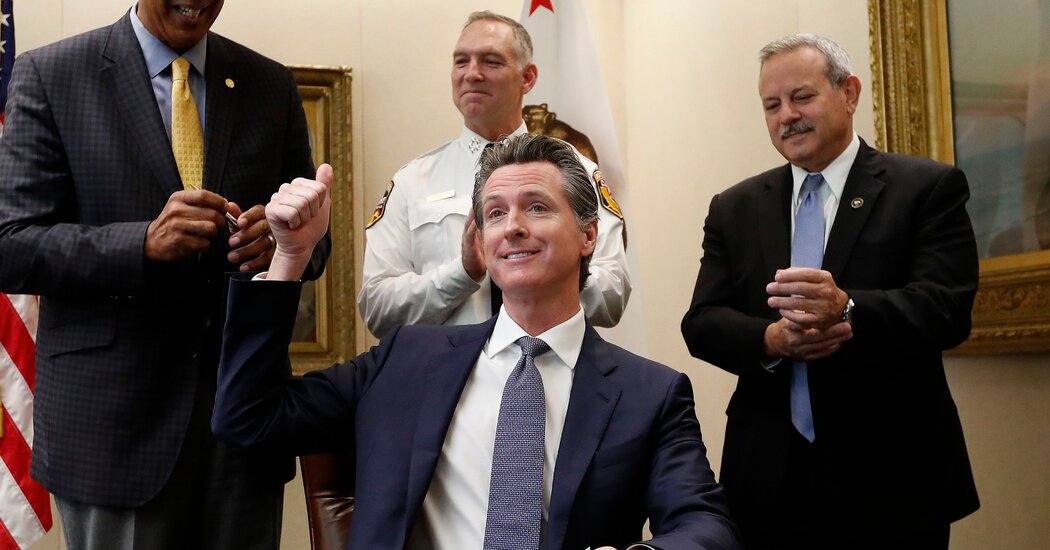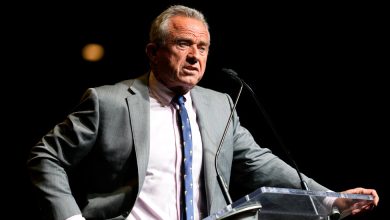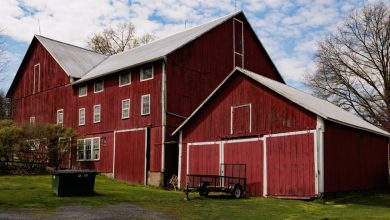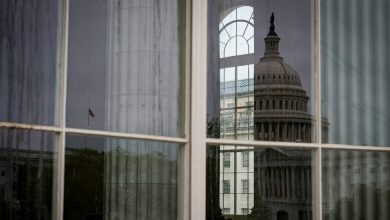How to Live in California in a Disaster Era


Mark Ghilarducci, the state’s emergency services director, right, with Gov. Gavin Newsom as he signed wildfire legislation in 2019. Ghilarducci has worked in emergency services for four decades. Credit…John G Mabanglo/EPA, via Shutterstock
Three times in the last four years, Mark Ghilarducci has tried to retire from his decade-long job as the head of emergency services in California, only to postpone because of some, well, emergency.
First, he was going to leave in 2018, as Gov. Gavin Newsom succeeded Gov. Jerry Brown. Two days after the election, the Camp fire razed the community of Paradise in Northern California. The fire was so catastrophic that Ghilarducci agreed to stay for an extra six months, which stretched into a year, after which he insisted that he was really quitting.
Then the coronavirus struck. Now, he is hoping, at 62, that the third time will be the charm.
Last week, as the governor prepared to conduct a national search for his replacement, we chatted in his office in the state’s sprawling emergency services complex near Sacramento. It was unclear how, exactly, he might gracefully exit. Moments from a clean getaway, Ghilarducci, the youngest son of a Bay Area butcher and Bank of America worker, was juggling two deadly wildfires, a historic heat wave, a statewide threat of electrical blackouts and a tropical storm.
Here’s some of our conversation, edited for clarity and length.
Four years after the fire in Paradise, California continues to be besieged by disaster. Put that in context, please.
I can only speak to what’s in front of me, but what I’m seeing is dramatic change in our climate that is resulting in extreme-weather-related impacts. We just came through a heat dome of unprecedented duration and intensity. We have hot summers, I get it — I went to U.C. Davis — and we’ve seen crazy extreme weather conditions. But I don’t think this is an anomaly. This is the new normal.
So should Californians be making a run for it?
California isn’t falling off the face of the earth, and California isn’t collapsing.The beauty, the diversity, the complexity, all of those things make us strong but also make us challenging.
But I wonder when I see the heat events we’re having: How bad is that going to get in the future? What does this drought look like in the future? Look at other parts of the world that have had similar heat and drought patterns — they essentially dried up and became very difficult places to live. Based on my experience, in actual events over the last 10 years, it’s getting worse, not better. And we all have a part to play in that.
So how do we cope, if we aren’t going to leave?
Part of it is reducing greenhouse gas emissions. But it’s also being prepared. Those who understand that will best navigate a disaster. They’ve thought through their insurance. They’ve thought through their family plan. They’ve thought through their communications plan. We have a great tool called My Hazards, where you can just type in your address and it will help you plan.
But it’s not just natural disasters. Emergencies happen when you least expect them. You could be in the middle of an active shooter situation. Or all of a sudden there’s a bomb threat. Or hazardous materials across the street. How do you handle that? When you walk into a facility, do you know where the exits are? Is there a back door? If the lights go out, do you know where to go?
Clocking the exits? Really?
Quite frankly, I do that every place we go. It’s kind of weird to tell this, but when I walk into a facility, I don’t like to sit with my back to the front door.
Isn’t that a hard way to live?
It’s not. It’s a way to empower yourself to enjoy life without worrying about all those things. It’s built-in muscle memory empowering you to deal with a situation if you have to. No one wants to think about an emergency until it happens. But at that point, it’s too late.
Has it been harder since the pandemic to persuade people to think about safety?
At the beginning of the pandemic, California’s secretary of health and human services, Mark Ghaly, pointed out that it would be a public relations challenge as much as a health challenge — that if you don’t get the messaging right on the front end, public confidence would be lost and it will be almost impossible to get it back. California got it right, but the federal government didn’t. President Trump and his team at the White House corrupted the message, to the point that no one knew what or who to believe, to this day.
That mistrust must have been on your minds last week, when the state’s ability to avoid rolling blackouts hinged on the public’s sacrifice and cooperation.
Our experience in the pandemic did shape a lot of what we did. We never said, turn things off, for instance. Our message had been, conserve during these hours, turn your thermostat to 78. We were very judicious on the words we picked.
And then you and the California Independent System Operator, which manages the grid, issued that blaring cellphone alert.
At that point, we were at the razor’s edge. We had to tell people, listen, the grid’s about to collapse.
Were you afraid people wouldn’t comply?
None of us knew what was going to happen. We’ve only used that alert two other times at the state level. But we did it and within minutes, you could see the graph change. We were sitting there in the room going, can this be right? We called ISO and people were cheering. To me it showed that the public still will listen and still wants to believe in government.
You sound optimistic.
I’ve been doing this a long time and I’ve seen a lot. Oklahoma City, 19 children in the basement of that building, having to take every one of those kids out. Whole families in Japan, where all the generations live together, trying to exit the front doors and these tile roofs collapsed. We’d remove the tile roofs and find whole families, all the generations, from the great-grandparents to the youngest child, all in a row, just crushed. I could go on.
But I’ve also seen people pull together at the most adverse times in the most adverse situations, and I’ve seen people do so much good.
If you read one story, make it this
In 2020, Carissa Chen, a Harvard student sequestered at home in California for the pandemic, began a research project on her university’s ties to slavery. Now, descendants of people who were enslaved by Harvard’s benefactors, presidents and professors are wondering what they are owed as the university makes amends.
The rest of the news
-
Extreme weather: The Mosquito fire continued to threaten thousands of mountain homes in Northern California on Monday, while remnants of last week’s Pacific hurricane caused flash flooding in Lake Hughes and Death Valley, and heavy rains unleashed mudslides in San Bernardino County, The Associated Press reports.
-
Monkeypox: A Los Angeles County resident has died from monkeypox, the first fatality in the nation linked to the disease, The Los Angeles Times reports.
-
Top colleges: U.S. News has released its latest “Best Colleges” rankings. Stanford is in the top 5, Caltech is in the top 10, and U.C.L.A. and U.C. Berkeley are in the top 20. Among public universities, six U.C. campuses made the top 10. This comes as the publication faces increasing questions for its methodology after dropping Columbia University to No. 18 from No. 2.
-
Rising tuition: Of the top 20 schools on the U.S. News rankings, only the two U.C.s cost less than $55,000 for a year’s out-of-state tuition and fees, Bloomberg reports.
-
Loans: Hundreds of thousands of former college students are eligible for a federal program that would wipe their student loan debt but are unaware, because of the program’s poor communication and onerous rules, The Los Angeles Times reports.
-
Energy: Offshore wind projects near Santa Barbara and Humboldt Counties are facing pressure from competing industries, The Wall Street Journal reports.
-
Royalty: Former Gov. Jerry Brown and King Charles III have met three times since the 1970s. “I could see that he naturally would support environmentalism,” Brown tells Politico.
SOUTHERN CALIFORNIA
-
Emmy Awards: The Emmys, red carpet and all, returned to their downtown Los Angeles home at L.A. Live after two years of pandemic precautions. It was a big night for “White Lotus,” “Ted Lasso” and “Succession.” Here’s a full report.
-
Rapper shot: PnB Rock, the Philadelphia rapper best known for his 2016 hit “Selfish,” was killed Monday at Roscoe’s Chicken & Waffles in South Los Angeles, The Los Angeles Times reports.
-
Arson: An arson investigation is beginning after the historic Victory Baptist Church in South Los Angeles was destroyed by a fire early Sunday, The Associated Press reports.
CENTRAL CALIFORNIA
-
Sophia Mason: After nearly a six-month manhunt, a fugitive suspect has been arrested in the killing of Sophia Mason, 8, and will be held at the Merced County jail, The Fresno Bee reports.
NORTHERN CALIFORNIA
-
Poll: A new survey of San Franciscans finds the city deeply unhappy, with roughly one-third of respondents saying they were likely to leave within the next three years and 65 percent saying that life in the city is worse than when they first moved there, The San Francisco Chronicle reports.
-
DNA: A woman whose rape kit DNA was used by the police to arrest her in connection with an unrelated property crime last year has sued the city of San Francisco, saying the authorities violated her rights, The San Francisco Chronicle reports.
-
Trash: After scouring just one mile of Fallen Leaf Lake near South Lake Tahoe, divers were surprised to have removed 3,000 pounds of trash and about 100 car tires, The San Francisco Chronicle reports.
-
Wildfires: The New Yorker’s Tucker Nichols returns to the Eldorado National Forest to hike and sketch the aftermath of last year’s Caldor fire.
-
Scooters: San Francisco is mulling tough new rules to clear sidewalks of e-scooters, The San Francisco Standard reports.
What we’re eating
Pasta with pumpkin seed pesto.
Where we’re traveling
Today’s tip comes from Patricia Tweedy, who lives in Sacramento. Patricia recommends Desolation Wilderness, federally protected land near Lake Tahoe:
Tell us about your favorite places to visit in California. Email your suggestions to [email protected]. We’ll be sharing more in upcoming editions of the newsletter.
And before you go, some good news
It’s “somewhere you can build your confidence in life, even if you are not too sure about it.” It’s “a place where people want to see the real you.” In a poignant report for New York Times Opinion, students from Fremont High in Oakland shared what grown-ups don’t understand about school.
Thanks for reading. We’ll be back tomorrow.
P.S. Here’s today’s Mini Crossword.
Soumya Karlamangla, Allison Honors, Briana Scalia and Harrison Hill contributed to California Today. You can reach the team at [email protected].
.




